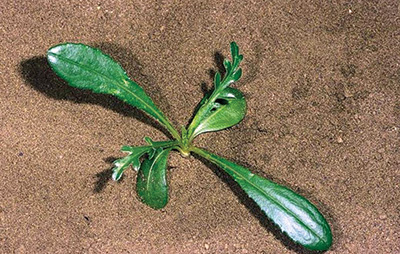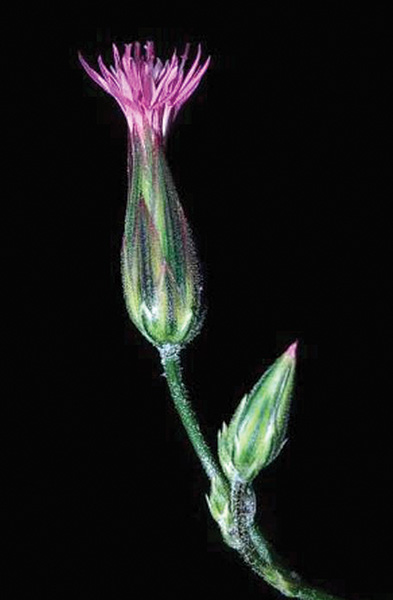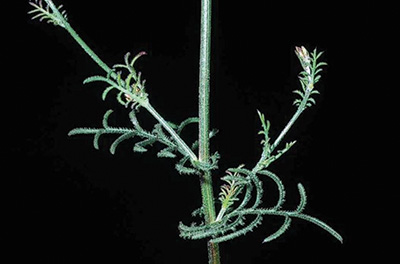Stem
- Up to 3 ft. tall and branched with lengthwise ridges along stem
Leaves
- Cotyledons are oblong, fleshy and hairless, often with a purplish midvein; rosette leaves are oval to lance-shaped with smooth, toothed or lobed edges (margins)
- Stem leaves are alternate and deeply pinnate-lobed; lower leaves are larger than upper leaves; edges are covered with short, stiff hairs

Common crupina rosette
Flower
- Pink or purple; occur in clusters of 1-5 at the tips of branches; base of flower is vase-shaped and narrow, 3 to 4 times longer than wide

Common crupina flower

Common crupina stem
Other
- Grows well under a wide range of environmental and soil conditions; often found in rangeland, pastures, waste areas, roadsides and along waterways; no known occurences in Nevada
- Annual; reproduces by seed;
- Listed on the Federal Noxious Weed List
Control
- Grazing or mowing can increase branching and seed production and are NOT effective
- Apply 2,4-D, dicamba or picloram to actively growing plants prior to flowering; aminocyclopyrachlor, aminopyralid, chlorsulfuron, clopyralid or metsulfuron pre or post-emergence
Blecker, L., Creech, E., Dick, J., Gephart, S., Hefner, M., Kratsch, H., Moe, A., Schultz, B.
2020,
Nevada Noxious Weed Field Guide – Common crupina,
Extension, University of Nevada, Reno, Field Guide


